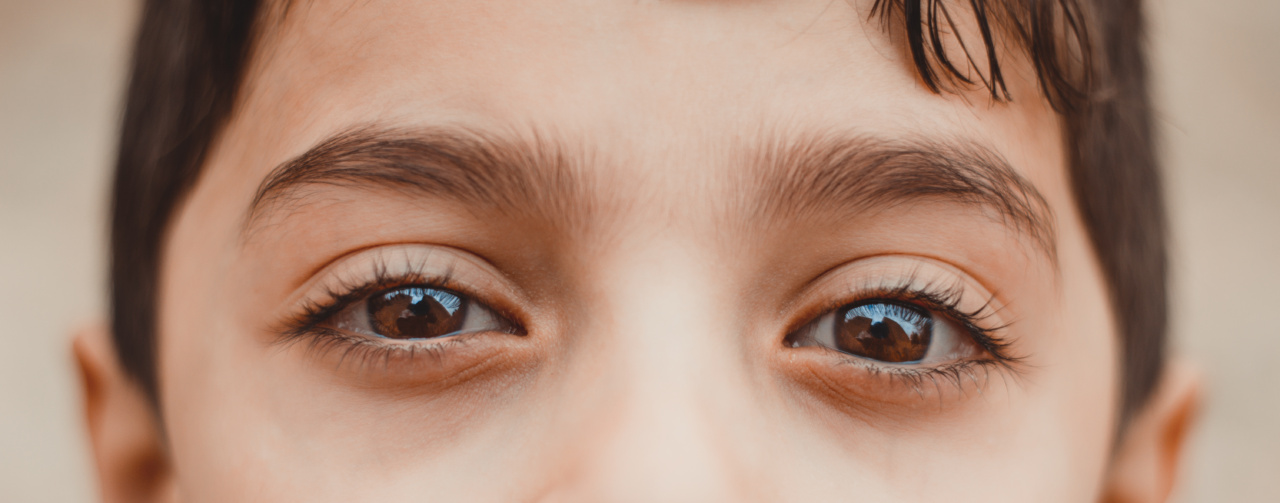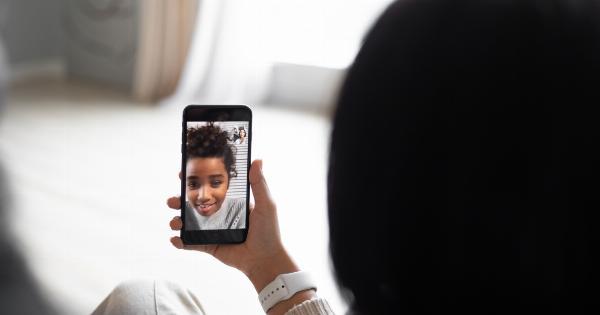In today’s digital age, screens have become an integral part of our lives, especially in the lives of children.
From smartphones and tablets to laptops and video game consoles, children are exposed to screens at home, in school, and even during their leisure time. While screens can provide educational and entertainment opportunities, experts have raised concerns about the potential long-term effects of excessive screen time on children’s eyesight.
In this article, we will explore the various ways screens can impact children’s eyes and discuss the measures that can be taken to protect their eye health.
The Impact of Blue Light
One of the primary concerns associated with screens is the exposure to blue light. Blue light is a high-energy, short-wavelength light that is emitted by screens and is known to cause eye strain and fatigue.
Prolonged exposure to blue light can lead to digital eye strain, also known as computer vision syndrome, which is characterized by symptoms such as dry eyes, blurred vision, and headaches.
Research has suggested that children may be more susceptible to the effects of blue light compared to adults. This is because the lenses in children’s eyes are more transparent, allowing a greater amount of blue light to reach the retina.
Furthermore, the natural filters in their eyes that protect against blue light are not fully developed until adolescence.
To minimize the impact of blue light, it is recommended to incorporate regular breaks from screen time. The 20-20-20 rule is often recommended, whereby children should take a 20-second break every 20 minutes and focus on an object at least 20 feet away.
Additionally, using blue light filters or wearing specialized glasses that block blue light can also help reduce the strain on the eyes.
Nearsightedness and Screen Time
Another concern regarding screens and children’s eyesight is the potential link to nearsightedness, also known as myopia. Nearsightedness is a condition where distant objects appear blurry, while close objects are seen clearly.
Studies have indicated a correlation between the increasing prevalence of myopia and the amount of time children spend on screens.
Screen time, particularly activities that require prolonged near vision, such as reading or playing video games, can contribute to the development and progression of myopia.
The exact mechanisms behind this association are still being studied, but it is believed that excessive near work and the lack of outdoor activities may play a role.
To address this issue, it is recommended to prioritize outdoor activities and encourage children to spend more time engaging in distance vision exercises.
Limiting screen time and ensuring that children maintain a proper distance from the screen can also help reduce the risk of myopia development.
Dry Eyes and Eye Irritation
Screens can also contribute to dry eyes and eye irritation in children. The act of staring at a screen for an extended period can lead to reduced blinking, which in turn causes the eyes to become dry and irritated.
Additionally, the glare from screens, especially when being used in low-light environments, can further strain the eyes and worsen symptoms.
To combat dry eyes, it is crucial for children to take regular breaks and blink consciously while using screens. Using artificial tears or lubricating eye drops can also provide relief from dryness and irritation.
Adjusting the screen brightness and avoiding glare by using proper lighting can help reduce eye strain and discomfort.
Sleep Disruptions
Excessive screen time, particularly before bedtime, can disrupt a child’s sleep patterns. The blue light emitted by screens can interfere with the production of melatonin, a hormone that regulates sleep.
When exposed to blue light close to bedtime, children may experience difficulties falling asleep and have poorer sleep quality.
To promote healthy sleep habits, it is recommended to establish screen-free zones and designate a technology-free period before bedtime.
Encouraging children to engage in relaxing activities such as reading books or taking a bath can help create a bedtime routine that promotes better sleep.
Posture and Musculoskeletal Issues
In addition to the effects on eyesight, excessive screen time can also lead to musculoskeletal issues in children. Poor posture while using screens, such as slouching or straining the neck, can cause neck and back pain.
This can be especially problematic for children who spend long hours using laptops or tablets without proper ergonomic support.
To prevent musculoskeletal problems, it is important to ensure that children maintain good posture while using screens. Providing ergonomic furniture, such as adjustable chairs and desks, can help promote a healthier sitting position.
Encouraging regular breaks and incorporating physical activities into their routine can also help alleviate the strain on their muscles and joints.
Encouraging Healthy Screen Habits
While screens have become an integral part of daily life, it is important to establish healthy screen habits for children to minimize the long-term effects on their eyesight. Here are some strategies to encourage responsible screen use:.
- Set screen time limits: Establish clear rules on the duration and timing of screen use. Encourage children to prioritize other activities such as physical play, reading, or creative hobbies.
- Lead by example: Be a role model by practicing responsible screen use yourself. Children are more likely to emulate the behavior they observe.
- Create screen-free zones: Designate certain areas or times in the house where screens are not allowed, such as during mealtime or in bedrooms.
- Encourage outdoor activities: Promote outdoor play and physical activities to reduce screen time and allow for distance vision exercises.
- Use parental controls: Utilize parental control features to restrict access to inappropriate content or limit screen time automatically.
- Educate about screen hygiene: Teach children about the importance of taking breaks, maintaining proper posture, and practicing good eye care while using screens.
- Encourage alternative activities: Provide a variety of engaging activities such as board games, puzzles, or arts and crafts to divert attention from screens.
- Involve the whole family: Make screen-free time a family affair by engaging in activities together, such as going for walks, playing sports, or having conversations.
- Regular eye check-ups: Schedule regular eye examinations for your child to detect any vision problems early on and to address any concerns regarding their eyesight.
- Stay informed: Keep up to date with the latest research and recommendations regarding screen use and eye health in children.
Conclusion
The long-term effects of screens on children’s eyesight are a growing concern in today’s digital world. Excessive screen time can lead to issues such as eye strain, nearsightedness, dry eyes, and disrupted sleep patterns.
However, by implementing responsible screen habits and taking necessary precautions, parents and caregivers can help protect and promote their children’s eye health. Encouraging outdoor activities, incorporating regular breaks, and prioritizing distance vision exercises can go a long way in mitigating the potential risks associated with screens.
By striking a healthy balance, children can continue to benefit from the advantages of technology while safeguarding their eyesight for the future.





























